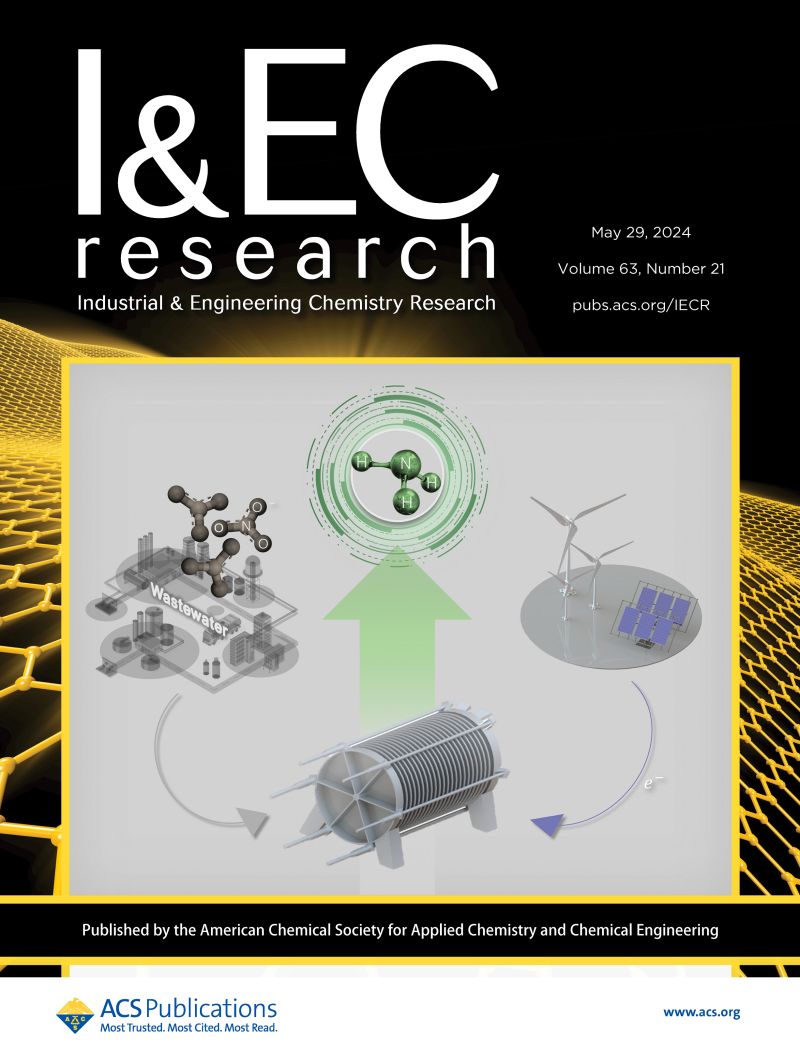Customizing the Crystal Facet of Carbon-Encapsulated Nickel Catalyst for Selective and Durable Electrocatalytic CO2 Reduction to CO
IF 3.9
3区 工程技术
Q2 ENGINEERING, CHEMICAL
引用次数: 0
Abstract
Carbon-supported non-noble metal-based catalysts display remarkable catalytic activity and cost-effectiveness in electrochemical CO2 reduction reaction (eCO2RR). However, precise control of the crystal facet of metal catalysts and prevention of deactivation caused by agglomeration remain challenges. Herein, a novel dual-function customized strategy is presented for the preparation of the N-doped carbon-supported Ni-based porous catalyst with carbon-encapsulated Ni(111) nanoparticles (Ni(111)@C-NDPC), through carbonizing the self-assembly of protein–Ni-ions networks and ethylenediaminetetraacetic acid (EDTA)-chelated Ni-ions (EDTA–Ni). High exposure of the (111) surface of carbon-encapsulated nickel nanoparticles is achieved through strong coordination between EDTA–Ni, thereby synergistically integrating the advantages of highly active Ni(111) and stable carbon-encapsulated structure formed by protein–Ni-ions networks. Theoretical calculations reveal that Ni(111) facilitates the formation of *COOH and inhibits the hydrogen evolution reaction. The as-prepared Ni(111)@C-NDPC electrocatalyst exhibits an excellent CO Faradaic efficiency (FECO) of 96.3% and stability over 50 h while maintaining FECO above 90% in a wide current density range of 50–300 mA cm–2. This work provides a new strategy for precisely customizing highly selective and durable carbon-supported metal eCO2RR electrocatalysts.

定制碳封装镍催化剂的晶体面,用于选择性和耐用的电催化CO2还原到CO
碳负载非贵金属基催化剂在电化学CO2还原反应(eCO2RR)中表现出优异的催化活性和成本效益。然而,精确控制金属催化剂的晶面和防止团聚引起的失活仍然是一个挑战。本文提出了一种新的双功能定制策略,通过碳化蛋白质- Ni离子网络和乙二胺四乙酸(EDTA)-螯合Ni离子(EDTA - Ni)的自组装,制备了碳包封Ni(111)纳米颗粒(Ni(111)@C-NDPC)的n掺杂碳负载Ni基多孔催化剂。通过EDTA-Ni之间的强配合,实现了碳包覆镍纳米粒子(111)表面的高暴露,从而协同整合了高活性Ni(111)和蛋白质- Ni离子网络形成的稳定碳包覆结构的优势。理论计算表明,Ni(111)有利于*COOH的形成,抑制析氢反应。制备的Ni(111)@C-NDPC电催化剂具有96.3%的CO法拉第效率(FECO)和50 h以上的稳定性,在50 - 300 mA cm-2的宽电流密度范围内,FECO保持在90%以上。这项工作为精确定制高选择性和耐用的碳负载金属eCO2RR电催化剂提供了一种新的策略。
本文章由计算机程序翻译,如有差异,请以英文原文为准。
求助全文
约1分钟内获得全文
求助全文
来源期刊

Industrial & Engineering Chemistry Research
工程技术-工程:化工
CiteScore
7.40
自引率
7.10%
发文量
1467
审稿时长
2.8 months
期刊介绍:
ndustrial & Engineering Chemistry, with variations in title and format, has been published since 1909 by the American Chemical Society. Industrial & Engineering Chemistry Research is a weekly publication that reports industrial and academic research in the broad fields of applied chemistry and chemical engineering with special focus on fundamentals, processes, and products.
 求助内容:
求助内容: 应助结果提醒方式:
应助结果提醒方式:


